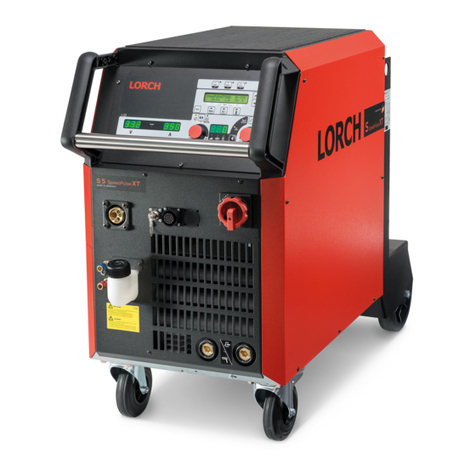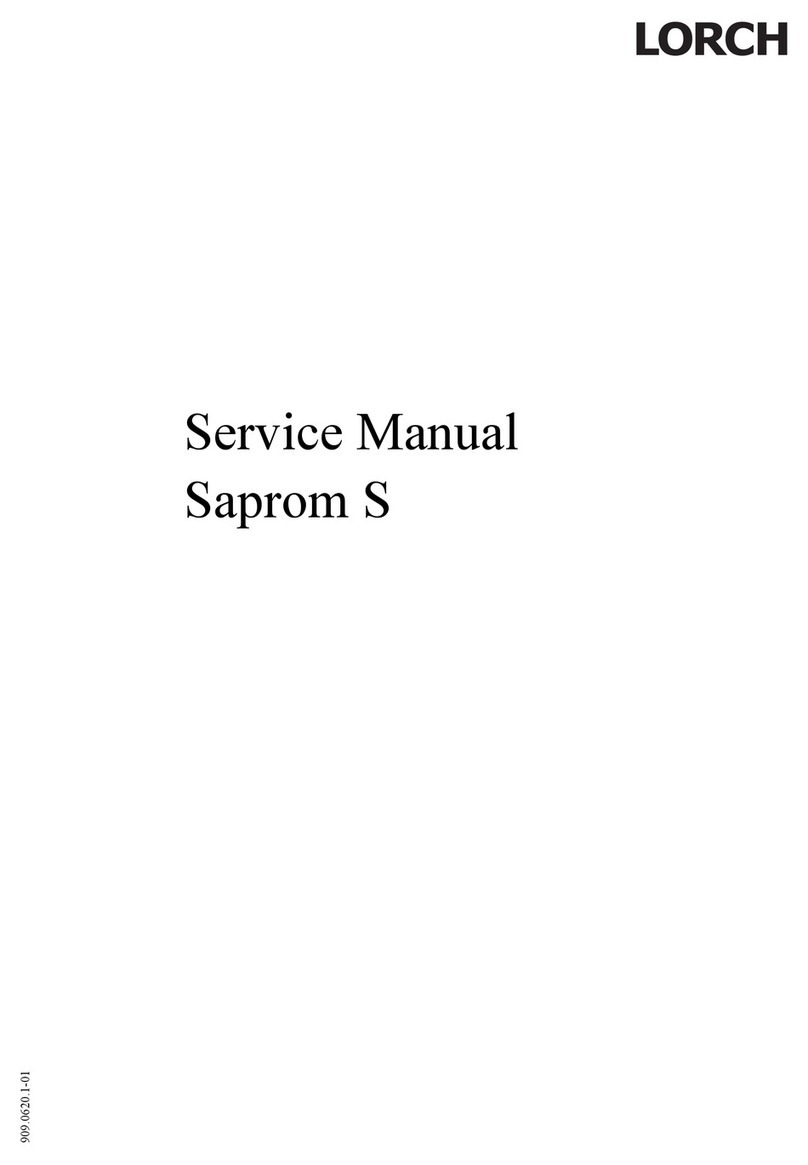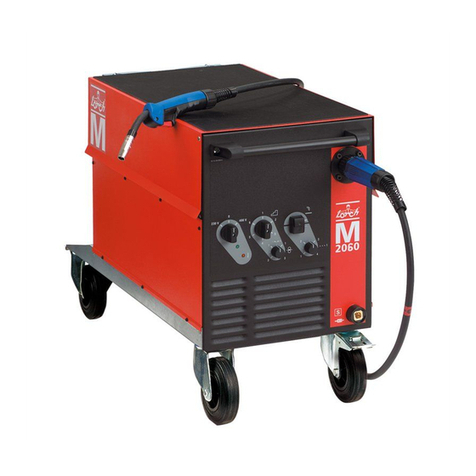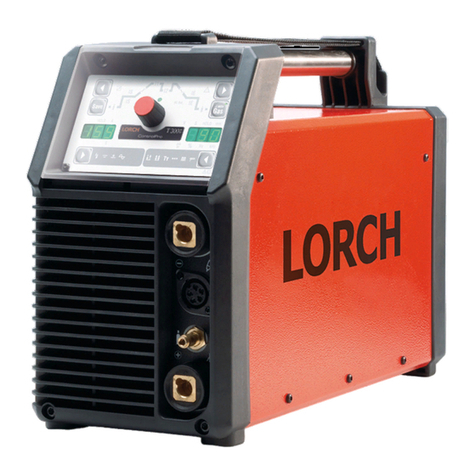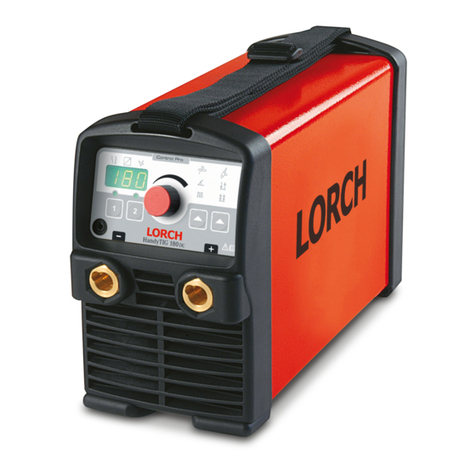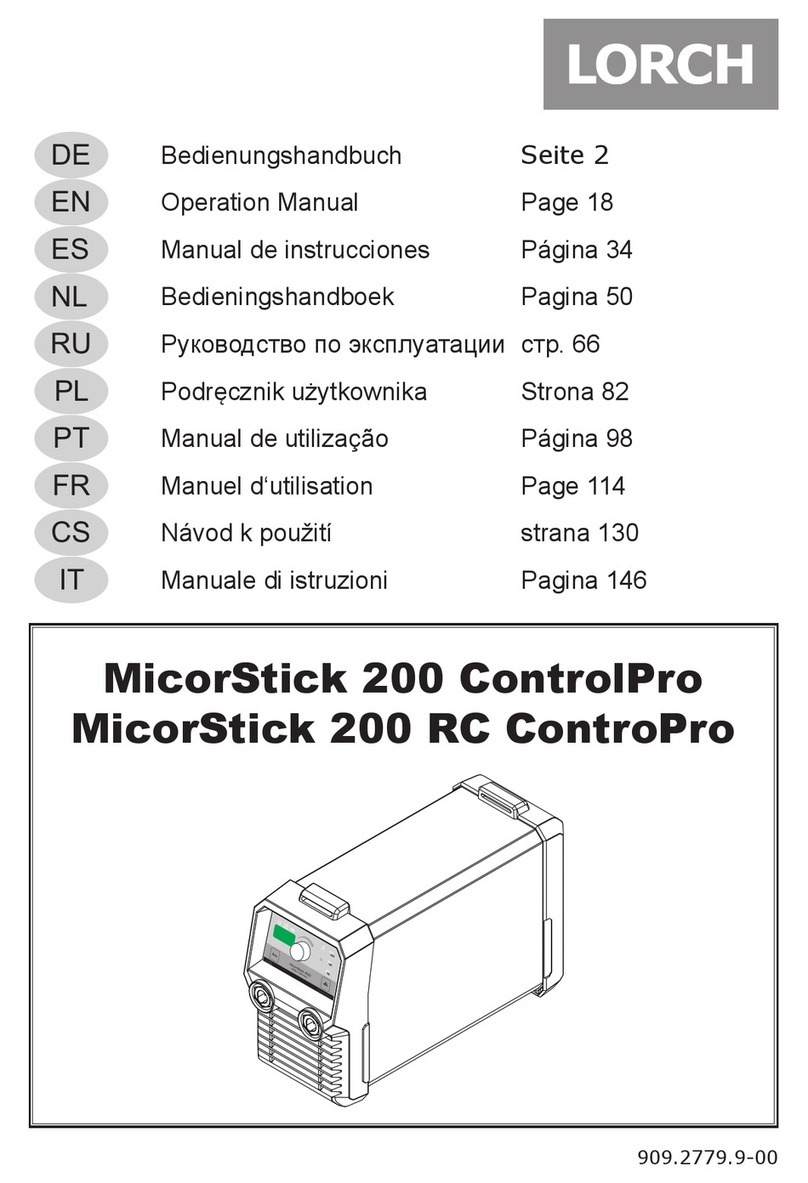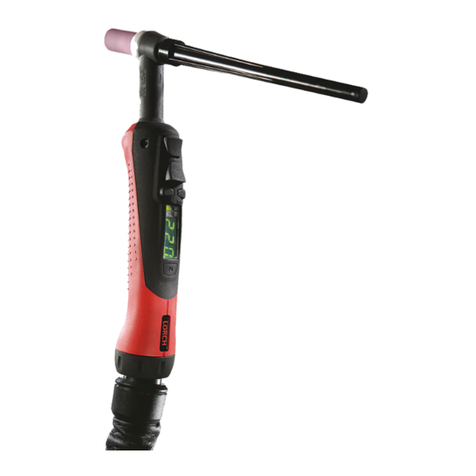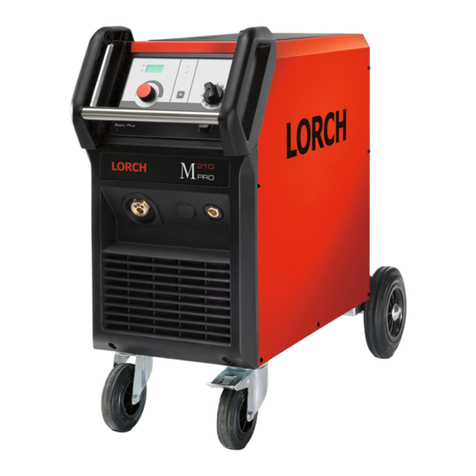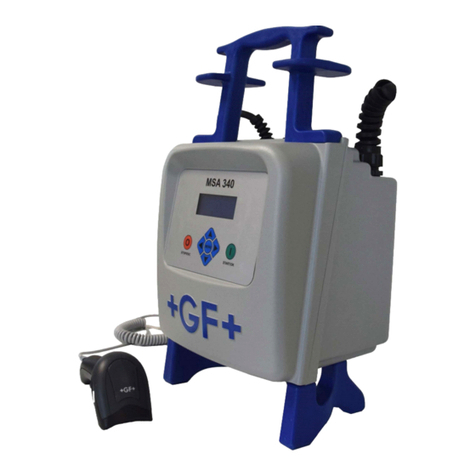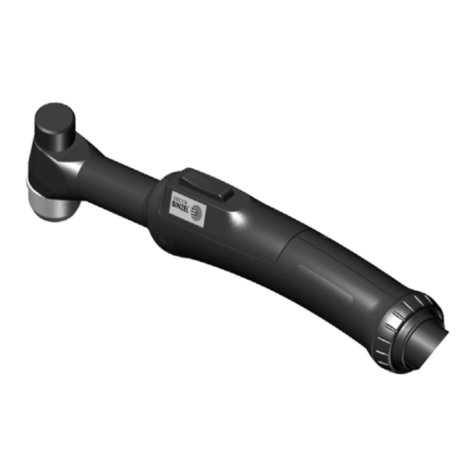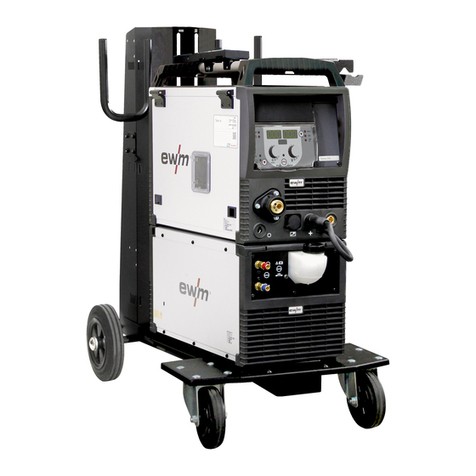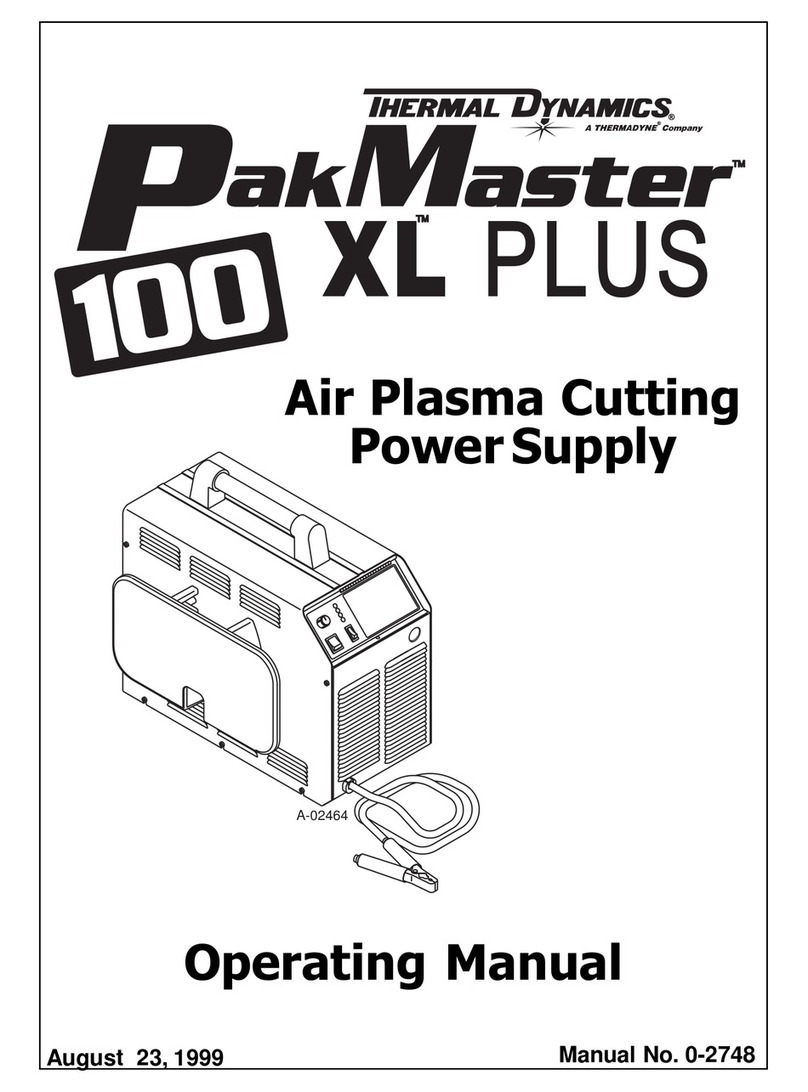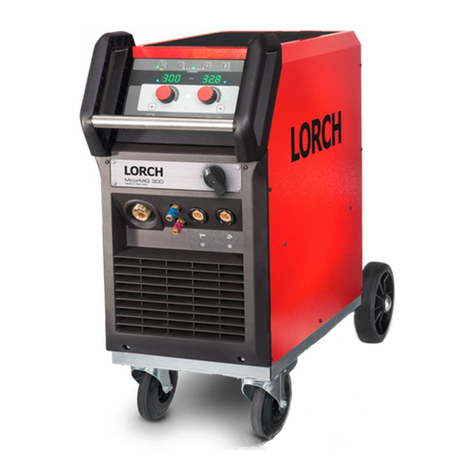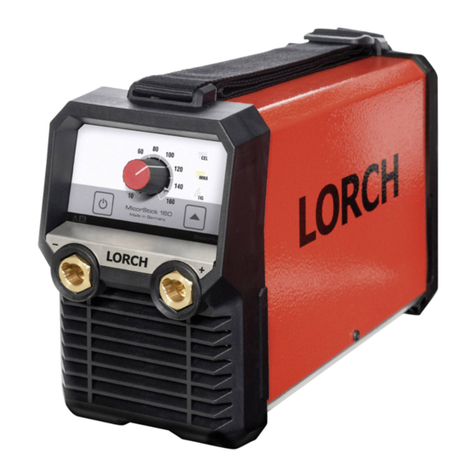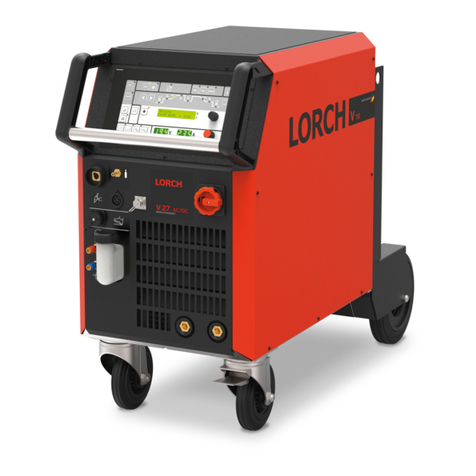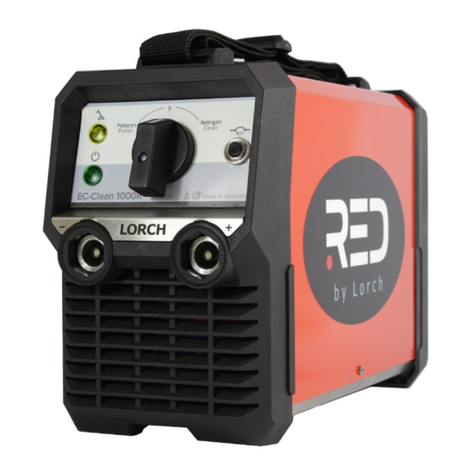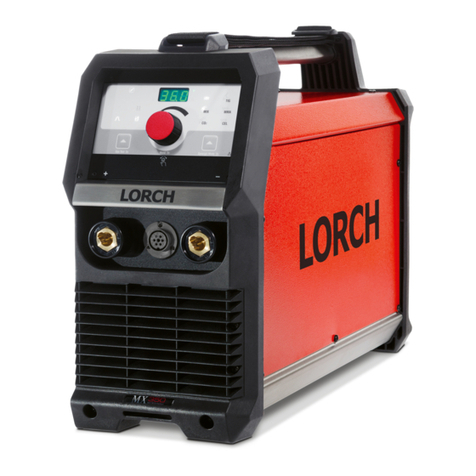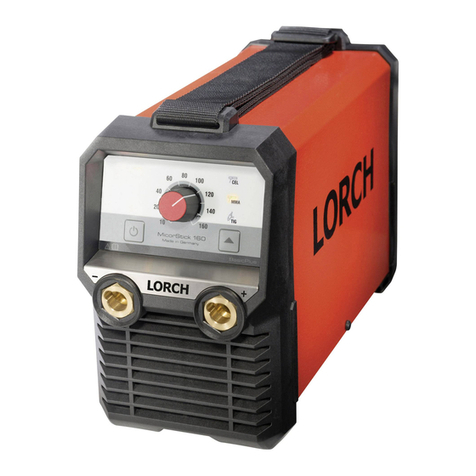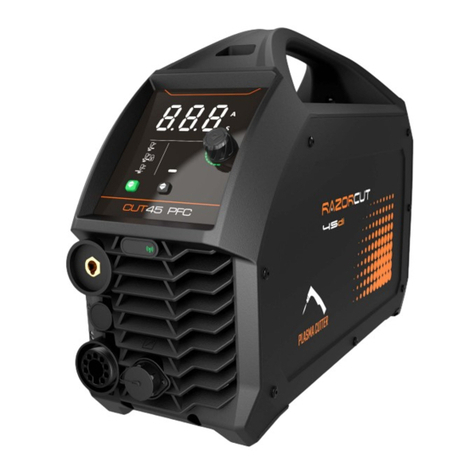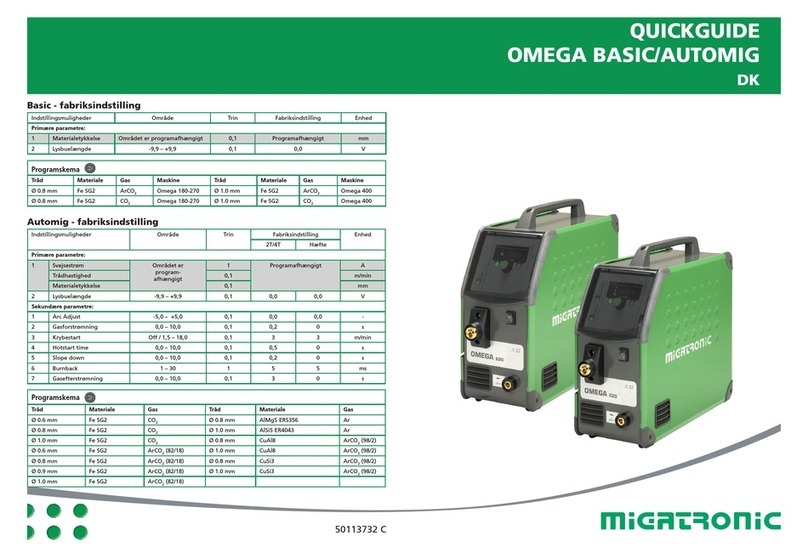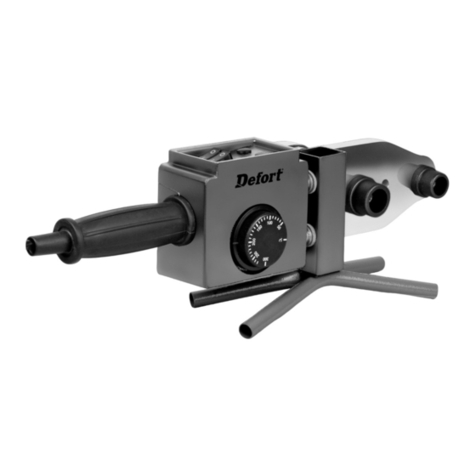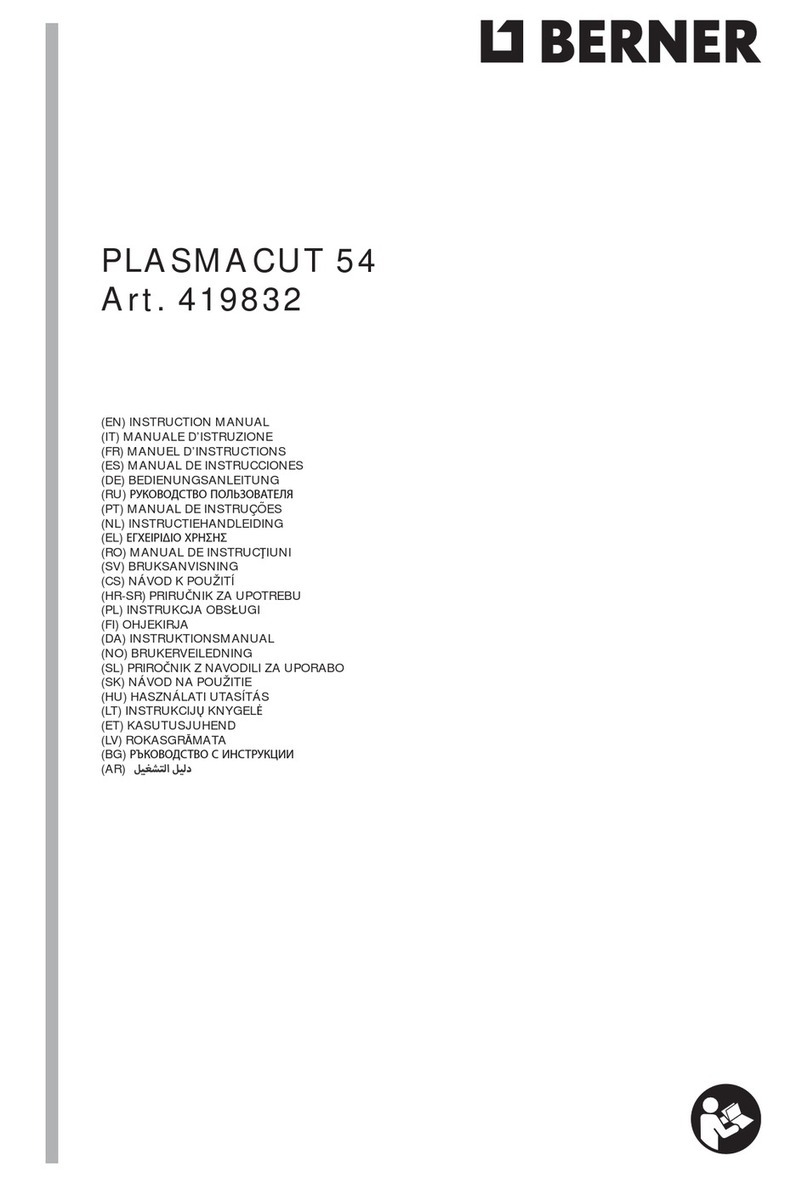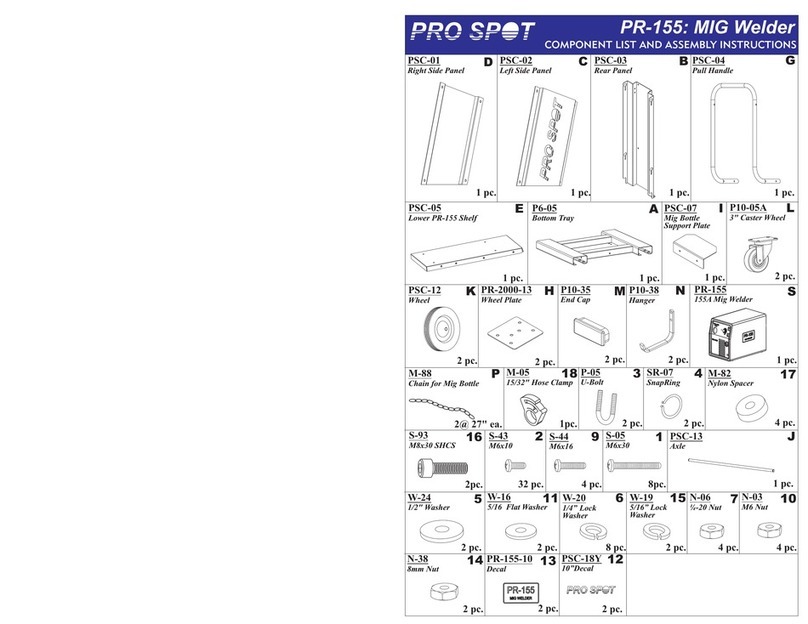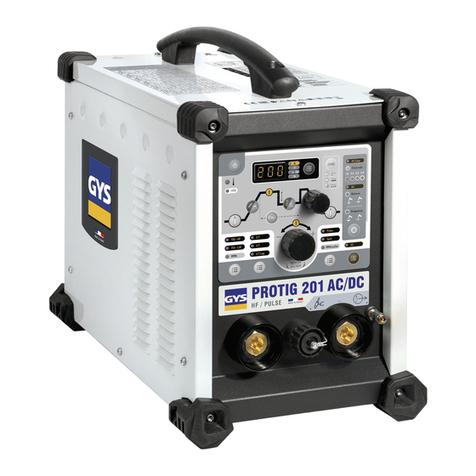
Ambient conditions
- 5 -
11.18 909.1550.1-08
3 Safety precautions
Hazard-free working with the machine is
only possible if you read the operating and
safety instructions completely and strictly
observe them.
Please obtain practical training before us-
ing the machine for the rst time. Heed the
safety regulation (UVV).*
Before starting any welding work, clear
away any solvents, degreasing agents,
and other ammable materials from the
working area. Non-movable ammable
materials must be covered. Only weld if the
ambient air contains no high concentra-
tions of dust, acid vapours, gases or am-
mable substances. Special care must be
taken during repair work on pipe systems
and tanks which contain or have contained
ammable liquids or gases.
Never touch live parts inside or outside of
the housing. Never touch welding elec-
trodes or live welding current parts in a
machine that is on.
Do not expose the machine to rain; do not
clean with sprays or steam jets.
Always use a welding shield. Warn anyone
in the work area about the dangers of arc
rays.
Please use a suitable extraction system for
gases and cutting fumes.
Always wear breathing apparatus when-
ever there is a risk of inhaling welding or
cutting fumes.
If the power cable is damaged or severed
while working, do not touch the cable, but
immediately pull out the mains plug. Never
use a machine if the mains cable is dam-
aged.
Keep a re extinguisher near the welding
area.
Check the welding area for re after weld-
ing (see UVV*).
Never try to disassemble the pressure
reducer. Replace the pressure reducer if
faulty.
The machine must be transported or set up
only on rm, level surfaces.
The maximum admissible angle of inclina-
tion for setting up or transporting is 10°.
Service and repair work may only be carried out by a
trained electrician.
Ensure that there is good direct contact for the ground
cable immediately beside the weld point. Do not pass
the welding current through chains, ball bearings,
steel cables, grounding conductors, etc., as it could
cause these to fuse.
Secure yourself and the welding machine when work-
ing in elevated or inclined areas.
The machine should be connected only to a properly
grounded mains supply. (Three-phase four-wire sys-
tem with grounded neutral conductor or single phase-
three-wire system with grounded neutral conductor)
socket and extension cable must have a functional
protective conductor.
Wear protective clothing, leather gloves and leather
apron.
Protect the welding area with curtains or mobile
screens.
Do not use welding equipment to thaw out frozen wa-
ter pipes or ducts.
In closed containers, under cramped conditions, and
in high electrical risk areas, only use machines with
the S sign.
When taking a break, switch off the machine and
close the valve on the gas cylinder.
Secure the gas cylinder with a chain to prevent it fall-
ing over.
Disconnect the mains plug from the mains before
changing the place of installation or making repairs
to the machine.
*) Only applicable for Germany. Can be ordered from Carl
Heymanns-Verlag, Luxemburger Str. 449, 50939 Köln.
Please heed the safety regulations which apply to your
country. Subject to change.
4 Ambient conditions
Temperature range of ambient air:
in operation: -20 °C ...+40 °C (-4 °F to +104 °F)
Transport
and storage -25 °C to +55 °C (-13 °F to +131 °F)
Relative humidity:
up to 50 % at 40 °C (104 °F)
up to 90 % at 20 °C (68 °F)
Operation, storage and transport may only
be carries out within the ranges indicated!
Use outside of this range is considered not
used with its intended purpose. The manu-
facturer is not liable for damages cause by
misuse.
Ambient air must be free of dust, acids, corrosive gases
or other damaging substances!
